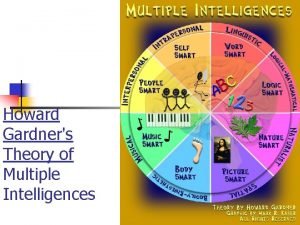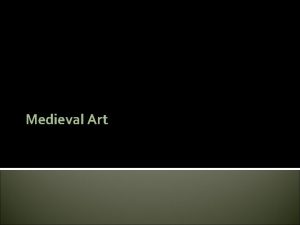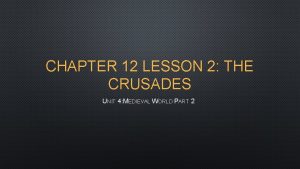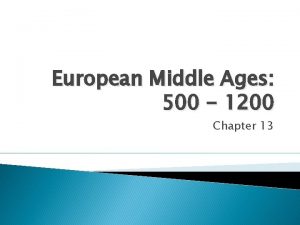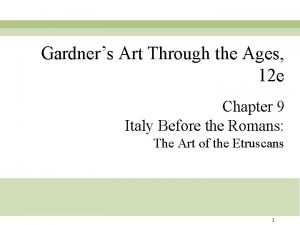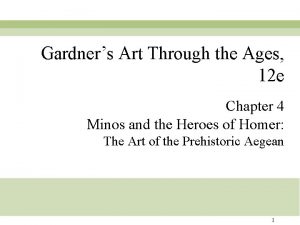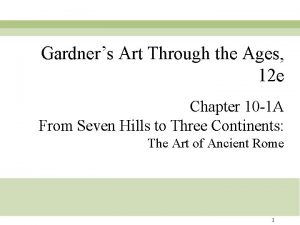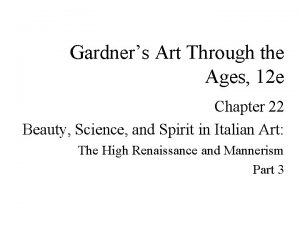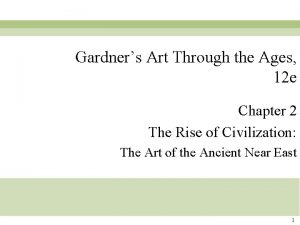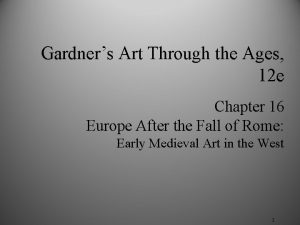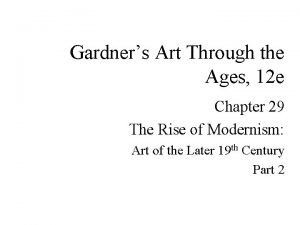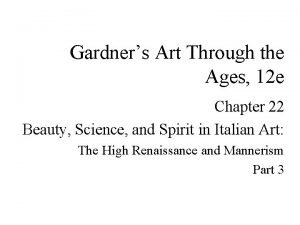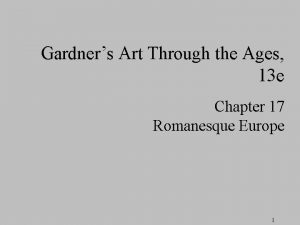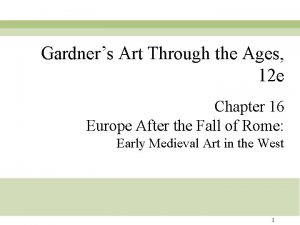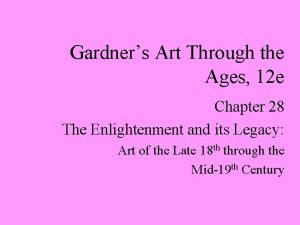Gardners Art Through the Ages 12 e Chapter













- Slides: 13

Gardner’s Art Through the Ages, 12 e Chapter 35. 1 The Development of Modernist Art: The Early 20 th Century

Colonial Empires About 1900

The Art of the Fauves • An early twentieth century art movement and style of painting in France. The name Fauves, French for "Wild Beasts, " was given to artists adhering to this style because it was felt that they used intense colors in a violent, uncontrolled way. The leader of the Fauves was Henri Matisse (French, 1869 -1954) • Andre Derain(1880 -1954) was one of the founding fathers of Fauvism, and one of its wildest practitioners. Influenced by van Gogh and working with Valminck in 1904 he felt that the impressionists had disintegrated their work into dots excessively. Instead, he chose to use wide, choppy brush strokes of pure color. In 1905, he worked with Matisse to bring the technique to maturity.

HENRI MATISSE, Red Room (Harmony in Red), 1908– 1909. Oil on

Henri Matisse - Woman with the Hat, Paris - 1904 There is nothing more difficult for a truly creative painter than to paint a rose, because before he can do so he has first to forget all the roses that were ever painted. - Henri Matisse

ANDRÉ DERAIN, The Dance, 1906. Oil on canvas, 6’ 7/8” x 6’ 10 1/4”. Fridart Foundation, London.

1905 Andre Derain, Boats at Collioure's Harbor, 1905

The German Expressionists • Die Brucke (The Bridge): This group of expressionists gathered together in 1905 in Dresden, Germany. They often used angular distortions and color to suggest their aversion for modern, post-industrial society (Ernst Kirchner) or to convey their preference for a kind of primal innocence in nature (Otto Muller). They believed that their social criticism of the ugliness of modern life could act as a "bridge" to a new and better future. Hitler late would label these painters "decadent" and banned them from German art galleries. • Der Blaue Reiter was a German expressionist art movement, lasting from 1911 to 1914. It took its name from a painting by Kandinsky, Le cavalier bleu. Following the Brucke artists of the previous decade, this second wave of expressionism was led by Kandinsky, Klee, and Marc in Munich. Through the use of distorted forms and startling color, they sought to discover spiritual truths that they felt the impressionists had overlooked. Less united stylistically and as a group than the Brücke, their art ranged from the sometime pure abstractions of Kandinsky to the romantic imagery of Marc. In 1911, Kandinsky and Marc prepared a significant collection of articles and illustrations published as the “Blaue Reiter” Album. Common to the artists in the group was a philosophical spirit, an intellectual approach to technique, and great lyrical spontaneity.

ERNST LUDWIG KIRCHNER, Street, Dresden, 1908

EMIL NOLDE, Saint Mary of Egypt among Sinners, 1912.

Vassily Kandinsky, Yellow, Red, Blue, 1925; Oil on canvas The Russian-born artist, one of the first creators of pure abstraction in modern painting. After successful avant-garde exhibitions, he founded the influential Munich group Der Blaue Reiter (The Blue Rider; 1911 -14) and began completely abstract painting. His forms evolved from fluid and organic to geometric and, finally, to pictographic.

VASSILY KANDINSKY, Improvisation 28 (2 nd version) 1912

FRANZ MARC, Fate of the Animals, 1913.
 Howard gardners theory of multiple intelligences
Howard gardners theory of multiple intelligences Multiple intelligences
Multiple intelligences Dark ages vs middle ages
Dark ages vs middle ages Renaissance art vs medieval art
Renaissance art vs medieval art Chapter 7 early childhood ages 3 through 5
Chapter 7 early childhood ages 3 through 5 A pattern repeated through the ages in literature
A pattern repeated through the ages in literature Technology through the ages
Technology through the ages Art of emerging europe meaning
Art of emerging europe meaning Middle ages art characteristics
Middle ages art characteristics Lesson 4 the late middle ages
Lesson 4 the late middle ages 500
500 Through one man sin entered the world, and through one man
Through one man sin entered the world, and through one man Classes of furcation
Classes of furcation Advantages of tangential sawing
Advantages of tangential sawing

